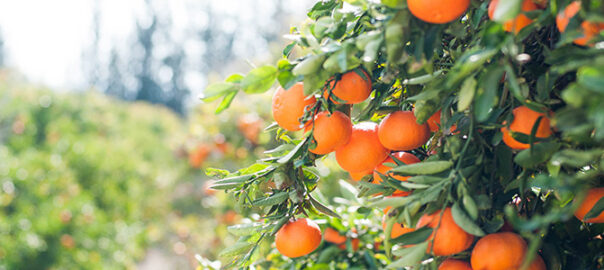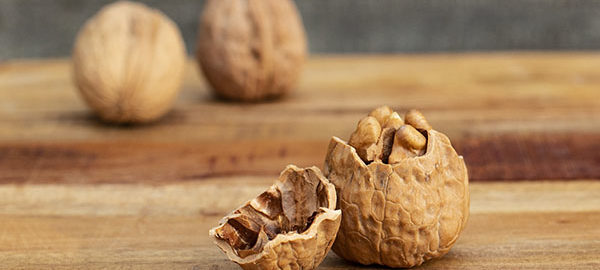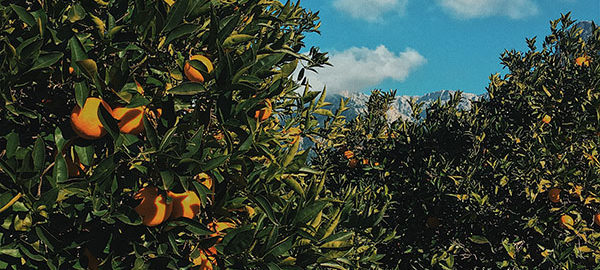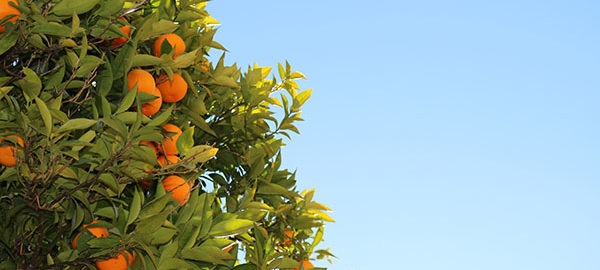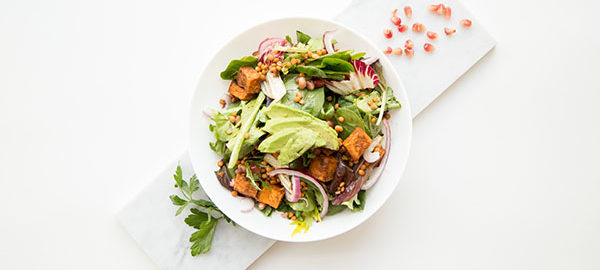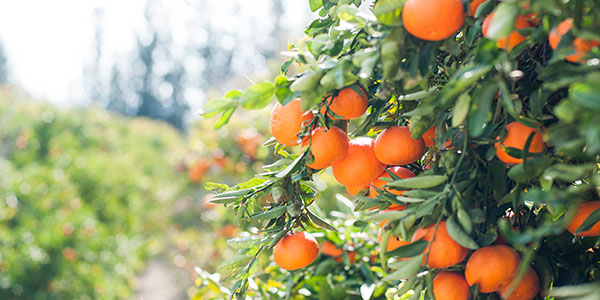
Oranges are a scrumptious and refreshing fruit. Many people eat them for breakfast because they are an excellent source of Vitamin C and antioxidants. Others juice them for a quick and energy filled drink. Most are easy to peel and eat on the go, and are an excellent (and healthy) gift for the holidays. There are over 400 varieties of oranges, and we have picked some of our favorites to share with you! When it’s this easy to buy fresh fruit online, there’s no question!
Blood Oranges
The blood orange stands out from every other orange because of its distinct crimson red flesh. It is a bit smaller than most oranges, comparable to a tangerine in size. Typically the skin is smooth, but may occasionally be pitted, and is easy to peel by hand (though juicy, so be prepared for a mess). Anthocyanin is the unique red pigment in blood oranges, and is an excellent antioxidant. In addition to the usual “orange” taste, they also have a delicious raspberry flavor. There are many uses for the blood orange aside from eating by itself—like marmalade, salads, and fruit cakes. They are also used in salad dressing and the zest as a baking ingredient. The mixture of sweet and tart makes eating a blood orange a very unique experience!
Clementine
Sometimes called the Christmas Orange because of its high demand from November to January, the Clementine is arguably the sweetest and juiciest of oranges. Compared to other oranges, it has a much lower acid content, creating a sweet, desirable flavor. It is a small fruit of deep orange color that has a smooth and glossy appearance. The popular “Cutie” orange is a Clementine. The Clementine has a thin outer layer, which makes it ideal to peel by hand. It is very similar to the tangerine but is (almost) always seedless. For this reason, some refer to it as a seedless tangerine. Clementines are great gifts because of their size, aesthetic appeal, and remarkable flavor.
Tangerines
Tangerines (sometimes called mandarins) are a variety of citrus that are orange in color and smaller than an orange in size. They are distinct because of their loose outer peel, which makes them easy for snacking on the go. The outside of a tangerine makes delectable zest for baking, and tangerines are commonly found on salads and as cooking ingredients. Tangerines have seeds, and don’t store very well off the tree. Sometimes they are sold with the stems and leaves still attached. Tangerines are known for their long growing season from November through May.
Navel Oranges
Navel oranges are one of the best oranges to juice because of their high vitamin C content and low acid content. This mixture creates a smooth, sweet flavor, ideal for orange juice. They are characterized by the small growth at the bottom of the fruit, resembling a navel. They have a particularly thin skin that makes peeling fast and easy, and are loaded with delectable juice. When choosing navel oranges, make sure the fruit seems heavy in hand—a good indication of how juicy it will be! One of the best features of a navel orange? They’re seedless!
Sour Oranges (Seville)
Sour oranges are not typically peeled to eat as snack, but used for cooking. They have one of the shortest growing seasons but are certainly worth the wait. The unique flavors sour oranges provide are excellent for countless recipes. Many people use sour oranges for marmalade because the flavors work well with the amount of sugar that has to be added. Different salad dressings and sauces benefit from sour oranges because of the wide range of flavors they add. For an interesting addition, use sour oranges instead of lemon or lime juice. They have just as much acid but produce a different result, perfect for pleasing the palette!
Shop all the best oranges online right now and get them quick, while they are in season!



